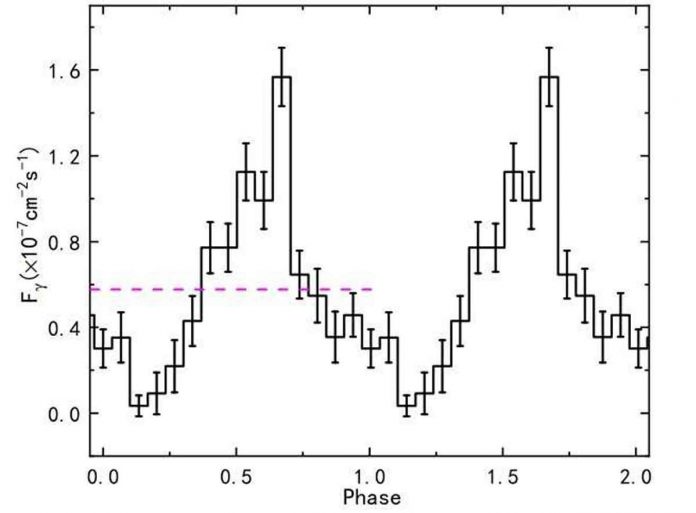Chinese astronomers have detected quasi-periodic oscillation from this source. They have analyzed the historical light curve of blazar PKS 0405-385 from NASA’s Fermi spacecraft. The discovery was presented in a paper published on arXiv.org. It could shed more light on the nature and behavior of this blazar.
Blazars are very compact quasars associated with supermassive black holes (SMBHs) at the centers of active and giant elliptical galaxies. They belong to a larger group of active galaxies that host active galactic nuclei (AGN) and are the most numerous extragalactic gamma-ray sources. Their characteristic features are relativistic jets pointed almost exactly toward the Earth.
Astronomers divide blazars into two classes which are flat-spectrum radio quasars (FSRQs) that feature prominent and broad optical emission lines and BL Lacertae objects (BL Lacs) that do not.When X-ray light from astronomical objects flickers about certain frequencies, the behavior is known as quasi-periodic oscillations (QPOs). Although many questions about the phenomenon of QPOs remain unanswered, it is believed that they occur when X-rays are emitted near the inner edge of an accretion disk in which gas swirls onto a compact object.
QPOs have been also observed in the gamma-ray emission from blazars. Gamma-ray QPOs in more than 20 blazars have been reported based on analyses of the data from Fermi’s Large Area Telescope (LAT). Given that the cause of gamma-ray QPOs is still unclear, it is important to detect new blazars exhibiting these oscillations in the gamma-ray regime and to investigate such sources.
A team of astronomers led by Yunlu Gong of Yunnan University in China reports the finding of quasi-period behavior in the gamma-ray light curve of PKS 0405-385. Given that the temporal coverage of high-energy gamma-ray turned out to be longer than that of the optical band, the team adopted the periodic timescale of approximately 2.8 years as the final result. It was added that the detected QPO behavior should be longer than the gamma-ray light curve duration.

